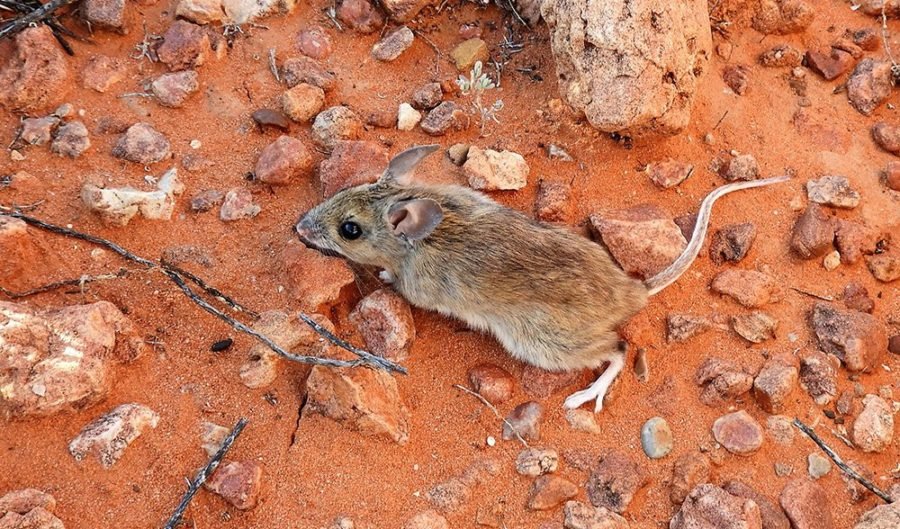Why we need a better appreciation of our native rodents

AUSTRALIA IS SO famous for marsupials that its rodents go under-appreciated, even though they outnumber marsupials across much of the continent, come in many shapes and sizes and occupy numerous ecological roles.
Some are beautiful, with soft chestnut, orange or golden fur. I admire our marsupials, but Australia has rodents that excite me just as much.
Our smallest marsupials used to be called ‘marsupial mice’, encouraging the idea that Australia is without true native rodents. In truth, however, rodents account for almost a quarter of our mammal species.
Newer on the scene than our marsupials and egg-laying monotremes, they are here because one rodent species arrived from Asia a little more than 5 million years ago, probably travelling on floating rafts of vegetation, and another came later. These two species eventually gave rise to the 65 or so species we have today.
See more: Meet the rakali, Australia’s otter equivalent
In the Simpson Desert one chilly winter’s night, equipped with a head torch, I meandered around with naturalists Lisa and Pete Nunn as rodents skipped across the sand and darted down holes. I was witnessing the tail end of a boom unleashed by heavy rains the previous summer.
Except during severe droughts, rodents such as the spinifex hopping-mice and plains mice we saw that night reach higher numbers than marsupials do across much of the outback. In two days and nights we saw only three marsupials: each was a small carnivore known as a kultarr.
Rodents are the most successful wild mammals on Earth and their mouths explain why – long, chisel-like incisors that grow constantly, along with a set of grinding molars, ensure rodents can really chew.
Anyone familiar with northern Queensland’s rainforests knows about giant white-tailed rats slicing open metal cans for a feed – or a drink of beer – and disabling cars by severing fan belts and water hoses. Burke and Wills abandoned one of their camps after long-haired rats turned their jaws to everything – food, equipment and the explorers themselves.
Rodent teeth are ideal for demolishing nuts and grains, but can also be used for other foods and purposes. They have given rodents a reputation for destruction but their bearers can also be masters of construction. Australia’s endemic stick-nest rats, for example, build domes a metre high, applying special sticky urine – called amberat – to glue them together. Some old nests in outback caves and recesses have been dated using this material at 7000 years old. Pebble-mound mice pile stones in heaps through which they form burrows.
And then there are the constructions created by Australia’s water mouse – moulded domes of mud on mangrove flats built so that internal burrows stay dry at high tide. Each remarkable structure is the work of a rather ordinary-looking rodent species, and, while many marsupials create nests and burrows, none are like those of our rodents.
One sunny morning in Tasmania I watched water swirling in a rock pool as small fish fled for their lives. Pursuing them was one of Australia’s largest rodent species, the water-rat, or rakali. The body length of this predator can reach 37cm and it’s capable of taking an adult duck. By hunting in lakes and rivers, and along shores, water-rats operate at the edge of what rats do.
A rescued Rakali.(Credit: Corey Young)
Australia lacks water-loving marsupials, because water seeping into the pouch would drown young, leaving niche opportunities for rodents and the platypus.
Other rodents on the boundaries include: the broad-toothed rat, which spends winters in runways under snow in the Australian Alps; hopping-mice in deserts; tree-dwelling mice in tropical-rainforest canopies; and the water mouse, which hunts crabs on mudflats.
On a high ridge in the West MacDonnell Ranges west of Alice Springs, I once helped NT Government biologist Pete MacDonald inspect traps we had set on the previous afternoon. It was reassuring that they contained three lively central rock-rats, confirming the species’ survival there. After 36 years without a sighting, this rodent had been deemed extinct until its rediscovery in 1996 in this area. At the scatter of sites where the central rock-rat now survives, feral cats and wildfires shadow its future.
On one remote peak, droppings from six out of 10 cats were found by one study to contain rock-rat remains. Pete says the surviving population is so small that as few as 10 cats could extirpate the species.
We often hear about Australia’s dramatic record of mammal extinctions, but not that more rodents than marsupials have succumbed: 14 species to 12. Feral cats are blamed for at least nine of our native rat and mouse extinctions.
Wild cats began associating with people about 8000 years ago in western Asia, lured into villages by rats and mice raiding grain stores. Although enjoyed today as pets, cats began their life with us as rodent killers, and losses in Australia attest to their efficiency in that role.
Earnest efforts are now underway to aid those rodent species most in need, such as the golden-backed tree-rat, brush-tailed rabbit-rat and central rock-rat. Those who know our rats and mice are passionate about them, as well they might be, for Australia is blessed with a bounty of remarkable rodents.
READ MORE:
- 8 adorable desert-dwellers
- This hopping mouse produces solid urine to cope in the harsh Aussie desert
- Endangered dusky mouse protected by dingoes
- Threatened Aussie mouse sneaks onto conservation reserve

